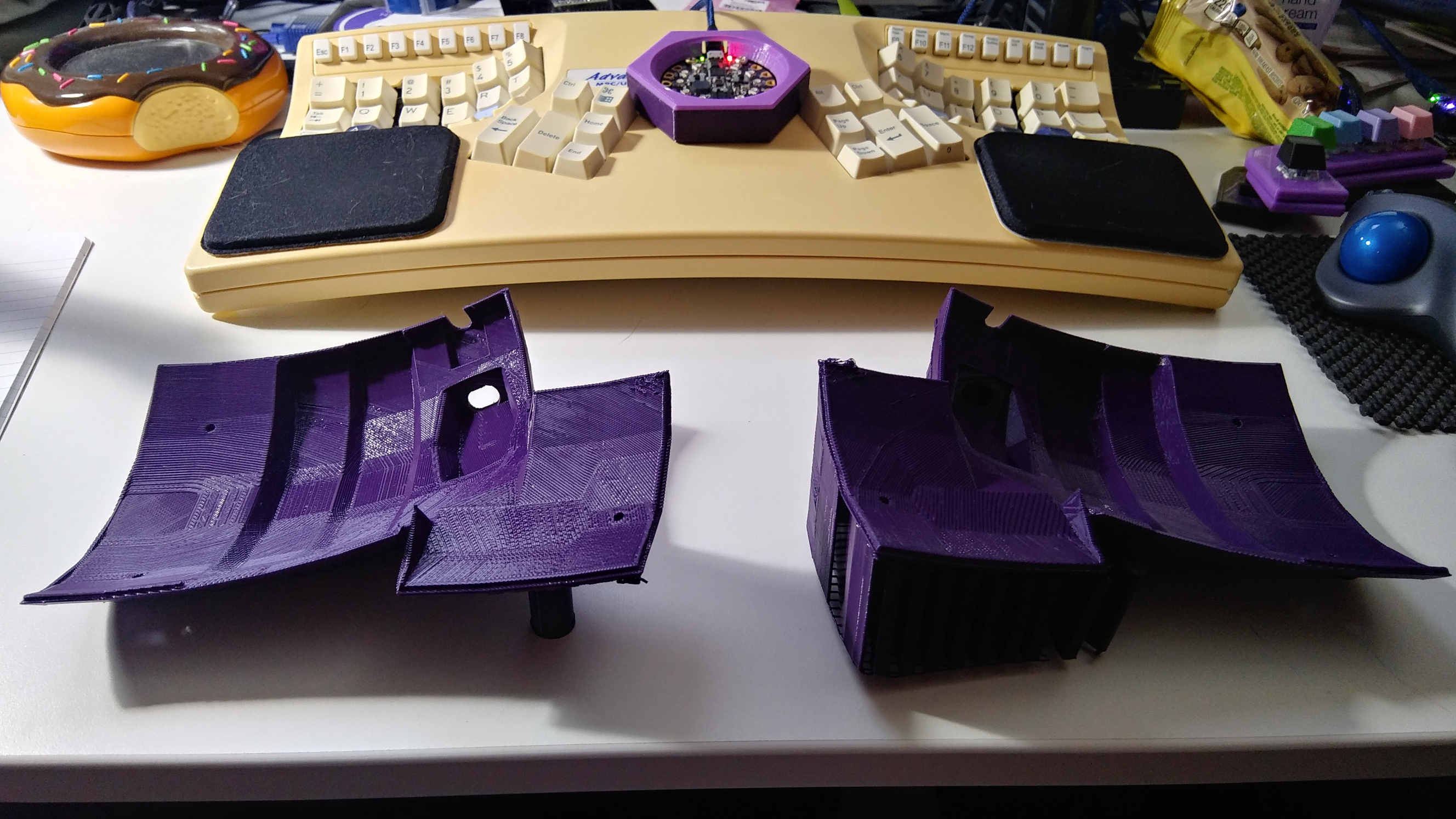Both bottom pieces are printed. I tried to break all the support material off of the right bottom yesterday, but my hand hurt too much.

Both bottom pieces are printed. I tried to break all the support material off of the right bottom yesterday, but my hand hurt too much.
Discussions
Become a Hackaday.io Member
Create an account to leave a comment. Already have an account? Log In.
It seems like it would almost use less support if it was printed the other way up! Perhaps simplify3d and other fancy slicers already do this but I would like to see the top layer of the support structure have Z moves to make it more like the peaks you get on meringue. Less contact area means less effort to remove?
Are you sure? yes | no
I agree about flipping the model, but then the inside of the case is only going to be so smooth without a lot of post-processing work. I hear that there is very little room inside the case as it is, so I'd rather not have areas that could snag or expose wires.
I don't know about changing the top layer of the support structure. You can do that?
Are you sure? yes | no
Sorry, didn't mean to get your hopes up; it was more of a wish than an existing technique. Although, I haven't looked around, so maybe it's possible. I use Cura and I don't recall the support settings being particularly sophisticated for single-material prints.
I wonder if you could transfer the dactyl key switch layout to a net (as in the 2D net of a 3D shape), fabricate it on a thinner-than-average PCB substrate and then bolt it down to the recessed surface of the case to produce the curve and bring the keys together. At least it might make the soldering easier. I use 0.6mm PCB regularly (not for this application) and I would think 0.6 or 0.8mm would be a good starting point. May need some solder-bridging on the back face to make the matrix work.
Are you sure? yes | no